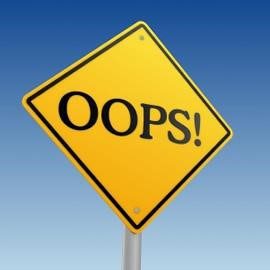In Part 1 of this two-part blog series, I’ll discuss what a value-based product strategy is, how it helps make better decisions, and helps differentiate. Next week, in Part 2, I’ll dive into the common missteps product managers make about value and how to avoid them. Okay, let’s begin!
What is a value-based product strategy?
Back in my consulting days, I learned that strategy, at its core, is about making a deliberate choice to go one way and not another. Not deciding, like standing in the middle of the road, is the worst possible thing you can do. Why? Because if you stand there too long you become road kill. You have to know where you’re supposed to be going.
So when it comes to products, the decision is all about how you will compete for customers versus your rivals, and there are fundamentally just two choices here:
You can be a low cost provider, which means that whatever market you compete in you have the lowest cost structure and use that advantage for best prices. Think Wal-Mart for retail, Spirit for airlines, and GEICO for car insurance. Now you can certainly try to compete with these giants on price, but without their scale, you can’t sustain it and will eventually lose.
So that leaves most of us with the second choice – differentiation – which essentially means making your products unique in a way that customers care about, and doing that better than your rivals. No surprise here. Uncovering customer needs and building out competitive advantages is a big part of the product management job. Now the thing about differentiation is that it has a lot of different paths and each of them cost time and money. And again, you need to make smart, deliberate decisions about where you are going and where you aren’t.
 How Value Helps Make Better Decisions
How Value Helps Make Better Decisions
A value approach is extremely useful for making good product strategy decisions. Such as:
- Which customer segments should you prioritize?
- Which features or services should be part of your offer?
- How do you price your offer that captures some of the value you create?
- How do you communicate that differentiation to your customers through sales and marketing channels?
Making the right decisions delivers improved outcomes in terms of sale cycles, margins and what we product managers want – more successful product launches.
How Value Helps You Differentiate
So value helps you differentiate, but we need to be precise about what we exactly mean by value. Because “value” is a word that is used wide and loose in business today. As our good friend Mike Wilkinson would say, “Our customers define value, not us.” So, we need to get inside the brain of a typical B2B customer.
Based on my experience, companies approach this in two different ways that roughly correspond to a left brain/right brain analogy.
 On the left – the rational/analytical side – there is the economic business case. You quantify value explicitly and transparently – presenting the ROI or value to customer in your value model or Value Proposition and you go from there. It’s direct and straight-forward. And frankly, it’s what we do at LeveragePoint every day for our customers.
On the left – the rational/analytical side – there is the economic business case. You quantify value explicitly and transparently – presenting the ROI or value to customer in your value model or Value Proposition and you go from there. It’s direct and straight-forward. And frankly, it’s what we do at LeveragePoint every day for our customers.
Moving to right side – the emotional/intuitive side – there is what I call the “Willingness to Pay” camp that get at the psychology and use methodologies to translate a whole lot of qualitative customer perceptions into a competitive pricing recommendation (in the case of value maps, or sensitivity analysis), or the best combination of features and price (in the case of Conjoint). This is a less direct approach. It tries to uncover the highest price people are willing to pay without them explicitly knowing why.
Those techniques are quite effective with consumer (or B2C) products, where there isn’t much of a business case – like buying shampoo or flat screen televisions. I would argue (and some may disagree), that they are less effective for B2B products. Precisely because economic value ultimately drives most B2B decisions – and a lot of so-called qualitative perceptions are actually tied to real, tangible operating business needs.
As Tom Nagle has long argued in his classic book Strategy & Tactics of Pricing, “Economic value is the primary determinant of willingness to pay.” And not the other way around. So in other words, if you are a B2B product manager, you simply cannot afford to ignore the left-side of your customer’s brain.
 Where do Product Managers go wrong on value?
Where do Product Managers go wrong on value?
Now I won’t go into the mechanics of Value Models in this blog series. We’ve done webinars on this in the past that you can find in the LeveragePoint Resource Center, along with whitepapers and blog posts on best practices. So no need to review that here.
Instead, I want share with you the 6 major ways where I’ve seen Product Managers go wrong on value. These are the misconceptions or behaviors that get in the way of creating a viable value product strategy. So by recognizing these common traps, you can begin to remove these barriers.
Tune in next week where I’ll address these common missteps, and how to avoid them.

